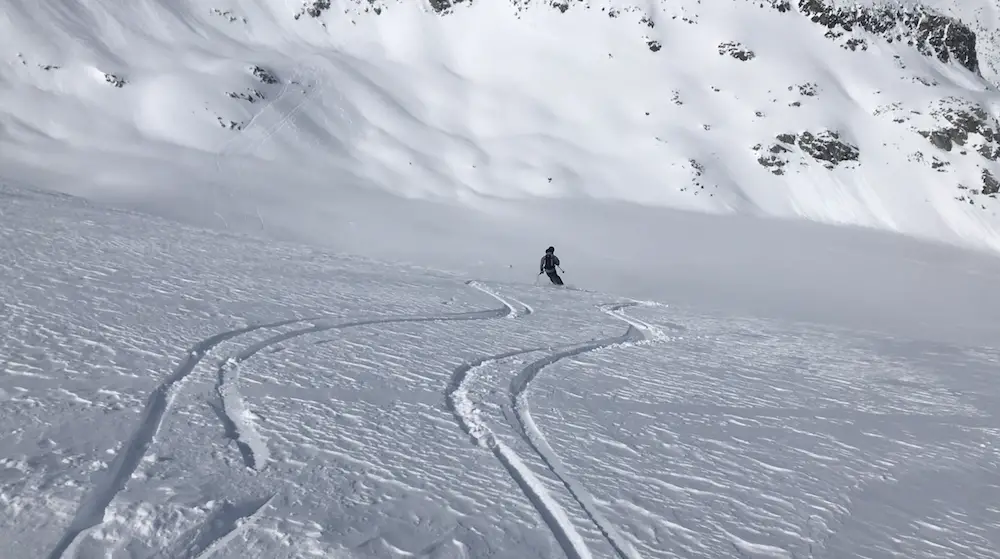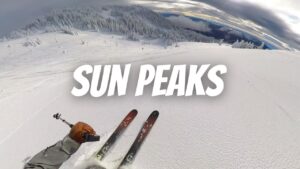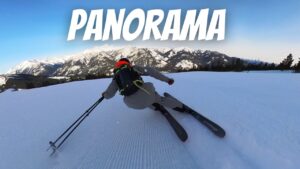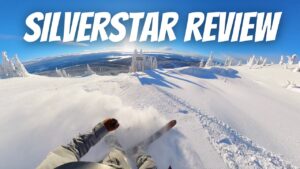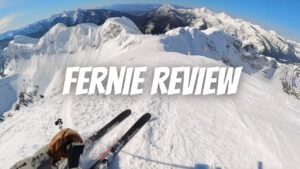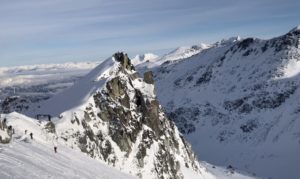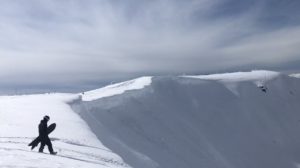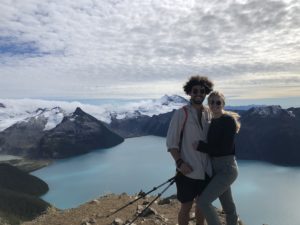Powder, freshies, shred sugar, nutfluff, blower powder, kool aid…. Powder has been coined with thousands of names over the past century. Whatever you call it, wherever you ski, it shares one undeniable trait. IT ROCKS!!!
Big powder days are what all of us obsessed skiers dream and crave. There is nothing in the world that beats the feeling of icy snow slapping your cheeks, soft apologetic landings and the ability to paint works of art on the untouched mountainside using the edges of your skis. Powder skiing is BLISS.
Powder skiing should feel effortless and amazing, but this isn’t the case for a lot of riders who have little experience on the fluff. Shredding like a pro doesn’t come and easy and takes lots of repetition to become fluid and comfortable. Skiing powder the right way takes practice. Learning to ski the deep stuff can be quite intimidating, challenging and exhausting at first. Don’t let these challenges stop you from heading to your home hill after the next big snowfall. I’m going to teach you a few simple tips and drills to help you perfect your powder technique so you can focus more on FUN and less on FALLING. I guarantee with a little bit of practice deep powder will soon be your favourite snow condition.
Table of Contents
Stay Loose & Light
My first tip when skiing powder is to keep it loose and light. When novice skiers first experience skis dipping beneath the snow they tend to become nervous and tighten up. Skiing powder is all about feeling light through your skis and through your turns. Don’t feel nervous if you feel the snow grabbing your skis and play around with your weight distribution a little bit. Falling is so much fun in powder because it’s soft. Learning to ski powder is all about feel and is a game of trial and error. Remember, “If you ain’t falling you ain’t trying!”
Begin With Powder/Dust On Groomers
The best way to become familiar with the feeling of powder skiing is to ski fresh snow on groomed runs. Most resorts will groom runs at different points in the night and if overnight snow is in the forecast it’s likely that there will be groomed and hard pack snow beneath the fresh snow. Groomed runs are more predictable and will allow you to get a feel for your skis sinking and how they react with a light layer of heavier snow.
Go Steeper & Use More Speed
Steep slopes and speed are your best friend on powder days. When the snow is deep there is increased resistance on your boots and skis. Without speed you will struggle to initiate and complete turns and may even get hung up on flat portions on the mountain. Nothing is worse than having to hike in your skis when people are whizzing by you hollering and having fun. (If you ever have to hike in powder, NEVER take your skis off, your boots will sink and it will be even more challenging). Choose blue slopes or steeper to ensure that you will have enough speed and will be able to easily link turns the whole way down. If the snow is deep enough try not turning at all, you will be surprised how much the resistance of the snow slows you down.
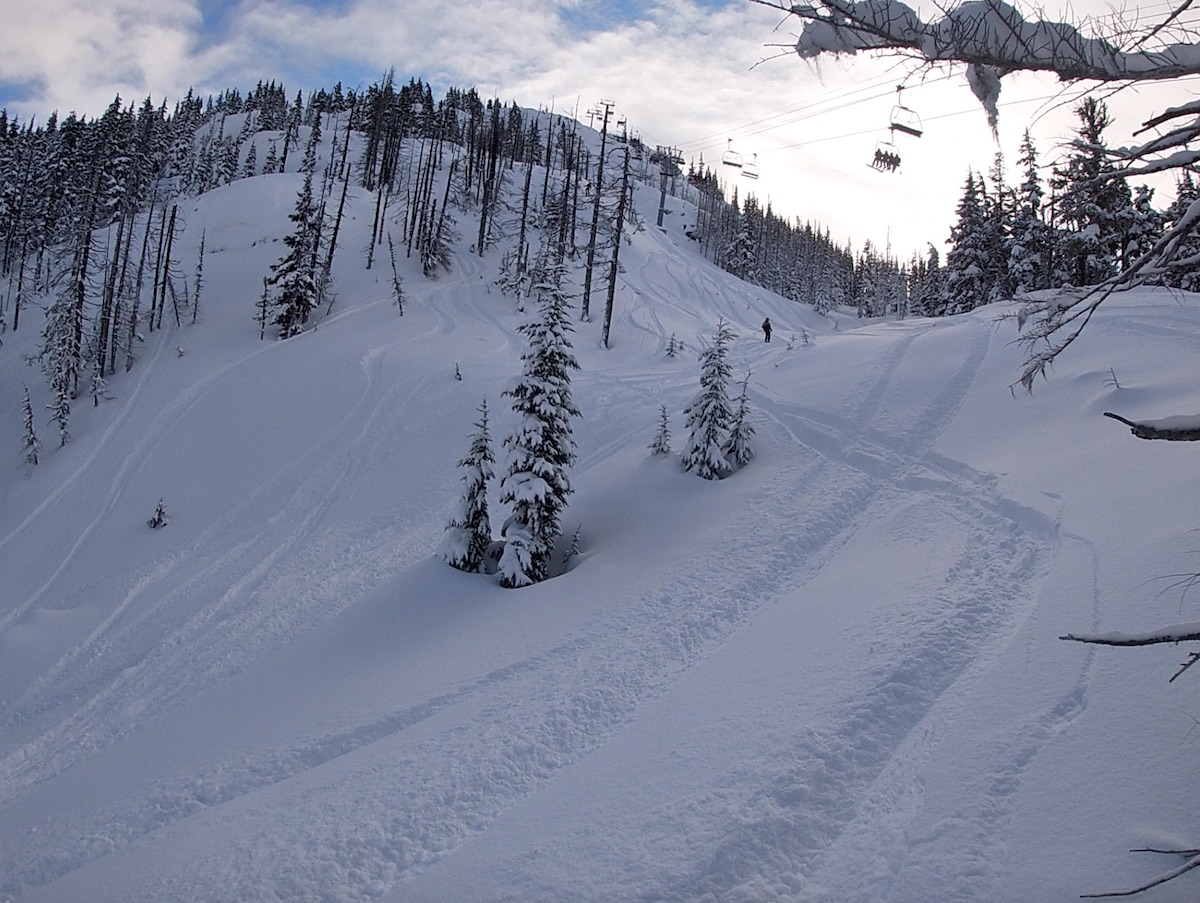
Stance
Stance is extremely important while skiing powder. Your stance should be very similar to that when you are skiing on-piste. Stay athletic and focus on keeping pressure on the front of your boots and your knees bent. Sometimes you are going to be leaning back (backseat) especially if you are riding narrow skis. Being backseat is considered bad ski technique but is sometimes necessary to keep your tips up and slide turn in very deep and wet west coast powder. My tip would be to focus on keeping your hands forward regardless of what your lower body is doing and this will force you to always be in a better position. Overall the width of your stance should be a bit closer together. Continue to vary the width of your stance depending on turn size and speed. Keep your skis close together for short popping turns and widen up your stance for big mountain powder carving arcs.
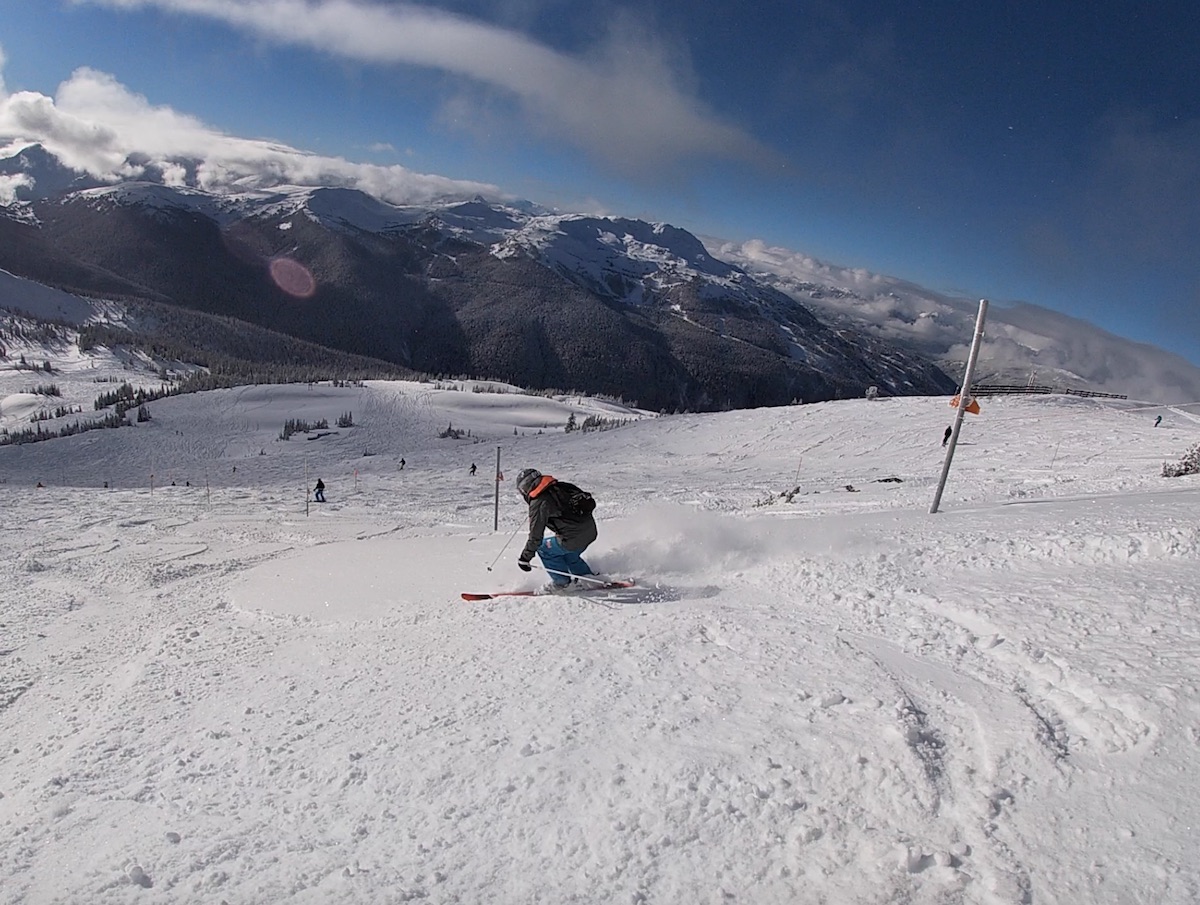
Short Pumping Turns
Practice pumping up and down in the snow to feel the skis sink down and pop up. Add this ‘popping’ up and down flexion of your knees while you are turning. Press down into the powder snow when you are making the turn and pop up while linking into your next turn. This can be a very helpful idea to keep in mind because it is easier to turn when your skis are on top of the snow and there is a lighter pressure. Also, this style of turning feels absolutely rad and amazing on all pitches while you are skiing powder.
Steering
When learning to ski Powder you are not going to be able to rely on your edges at first. You are going to need to focus on using your legs to turn. Remember to always keep your body facing down the fall line (downhill) and let your legs do the work. Turning too much with your body will slow you down as you are going across the hill. Sometimes when the snow is deep you only need to slightly point your tips either direction and can glide/float from side to side. Steering should be rhythmic and fluid. If you have a great feeling turn, replicate it on the other side and do it over and over again.
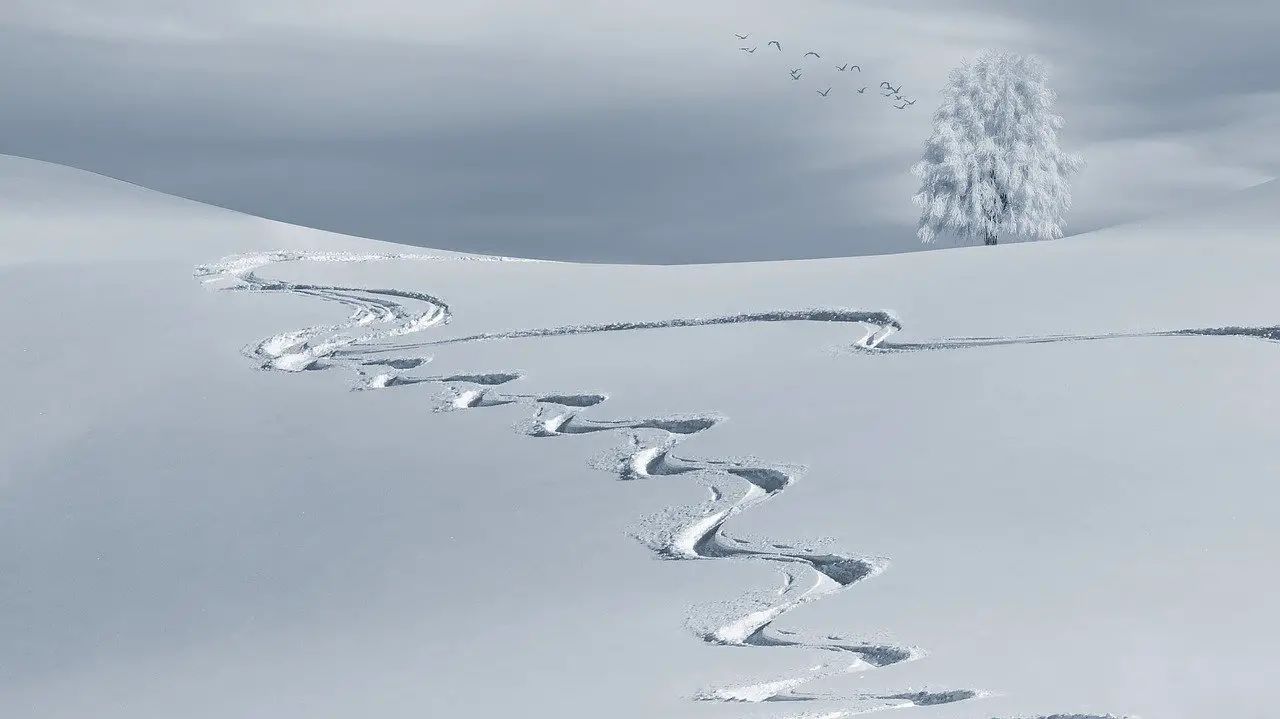
Pole Planting
Powder is exciting but don’t forget the basics. Pole planting is integral for keeping rhythm and timing while you are ripping down the hill. You don’t need to stick your pole to the bottom of the snowpack just lightly touch/rub it over the surface of the snow. Poles are strictly for timing and pushing you around in lift lines. Your stance and technique are what keep you balanced.
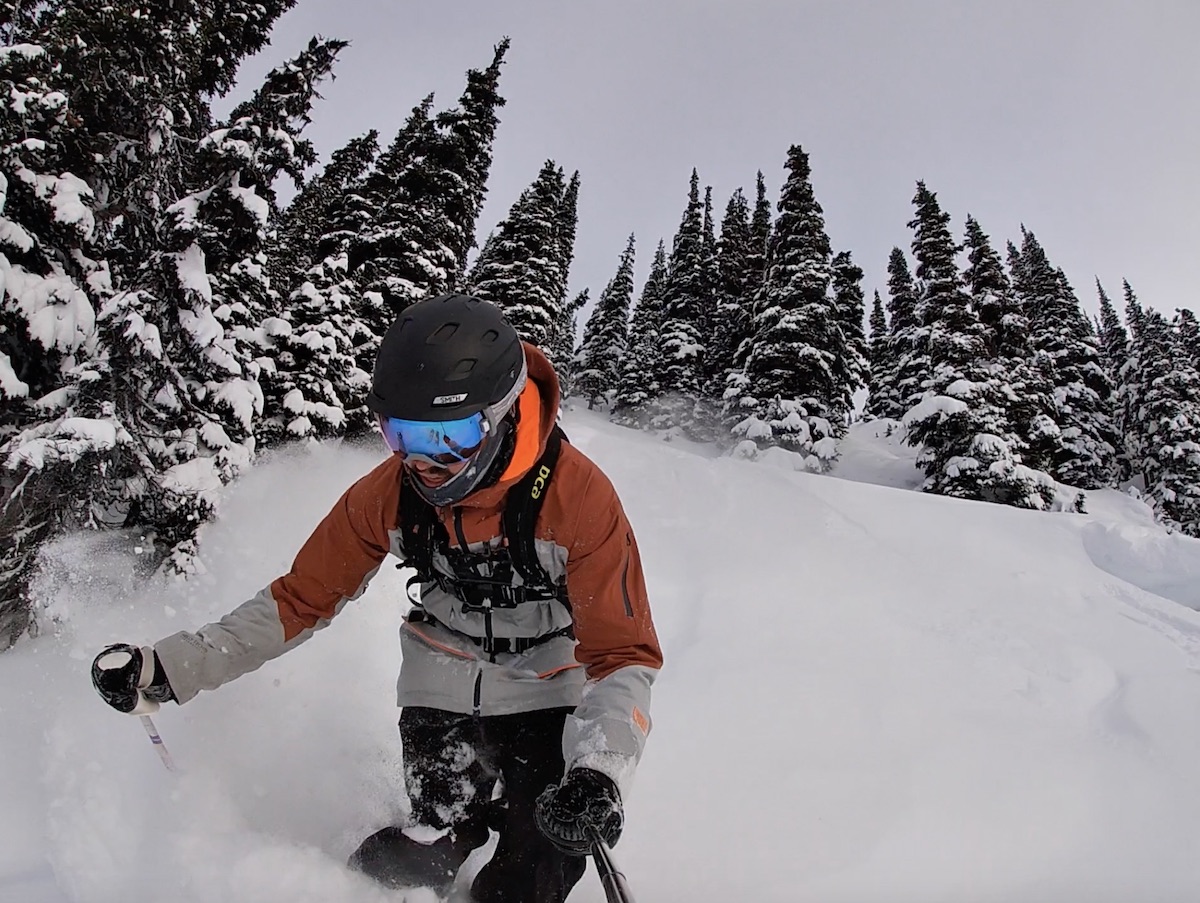
Carving Turns
Carving turns are the big arcing high speed turns that you see most big mountain skiers using in the powder. These are my favourite style of turns while powder skiing. These turns only work when you have lots of speed and are on a steep and sustained slope. Sometimes I like to alternate my turn shape depending on the changes in the snow and slope.
Powder Skis
I learned and loved skiing powder my entire life on 75mm underfoot racing skis. It is important to remember that it is the skier and not the skis that make the skier. However, having a wide powder ski can make your life so much easier in deep conditions. If you are a serious skier I would always recommend having multiple skis in your arsenal. Personally, I have a carving ski and a powder ski. As long as a ski is wider than 95mm underfoot you are going to have way more fun floating on the powder. A wider ski with a bit of rocker allows one to more easily float and initiate turns on powder snow while minimizing sink. Most all mountain intermediate skiers are choosing an all-round ski that is between 90-100mm underfoot and these skis will rock in powder snow and be able to handle well on groomers and crud. To learn more about ski width and figuring out what works best for your style, check out my Size Matters guide to which will help you determine the perfect ski size for you. If you are choosing to buy or rent a powder specific ski get something a little longer then you would normally ride to enlarge the surface area of the ski on the snow. Due to their width Powder skis will slightly change your style of skiing. You will not be able to lay down short carving turns and will need to focus on short popping turns or huge arcing turns. Here are my top Freeride Pow ski picks if you’re looking to buy or rent.
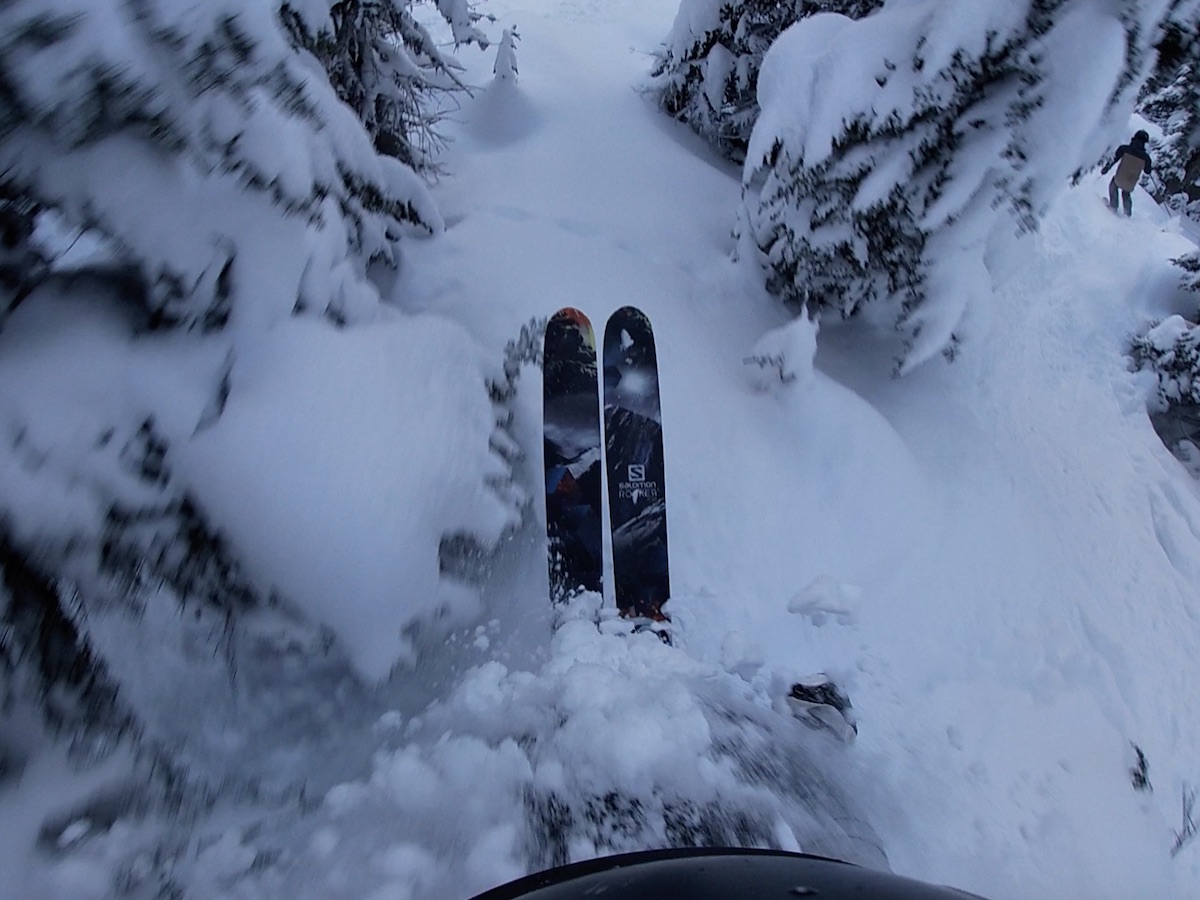
Play Around
The most important piece of advice I can give you is to play around. You need to get comfortable with the feeling of softer snow beneath your feet. Try jumping while skiing and lifting and pressing each leg up and down while skiing to feel the resistance beneath your feet. That point of resistance is the same feeling you should have as you finish/exit your turn on powder. Try varying degrees of slope angle, turn shapes and speed and remember that falling doesn’t hurt on powder days (just stay away from tree wells).
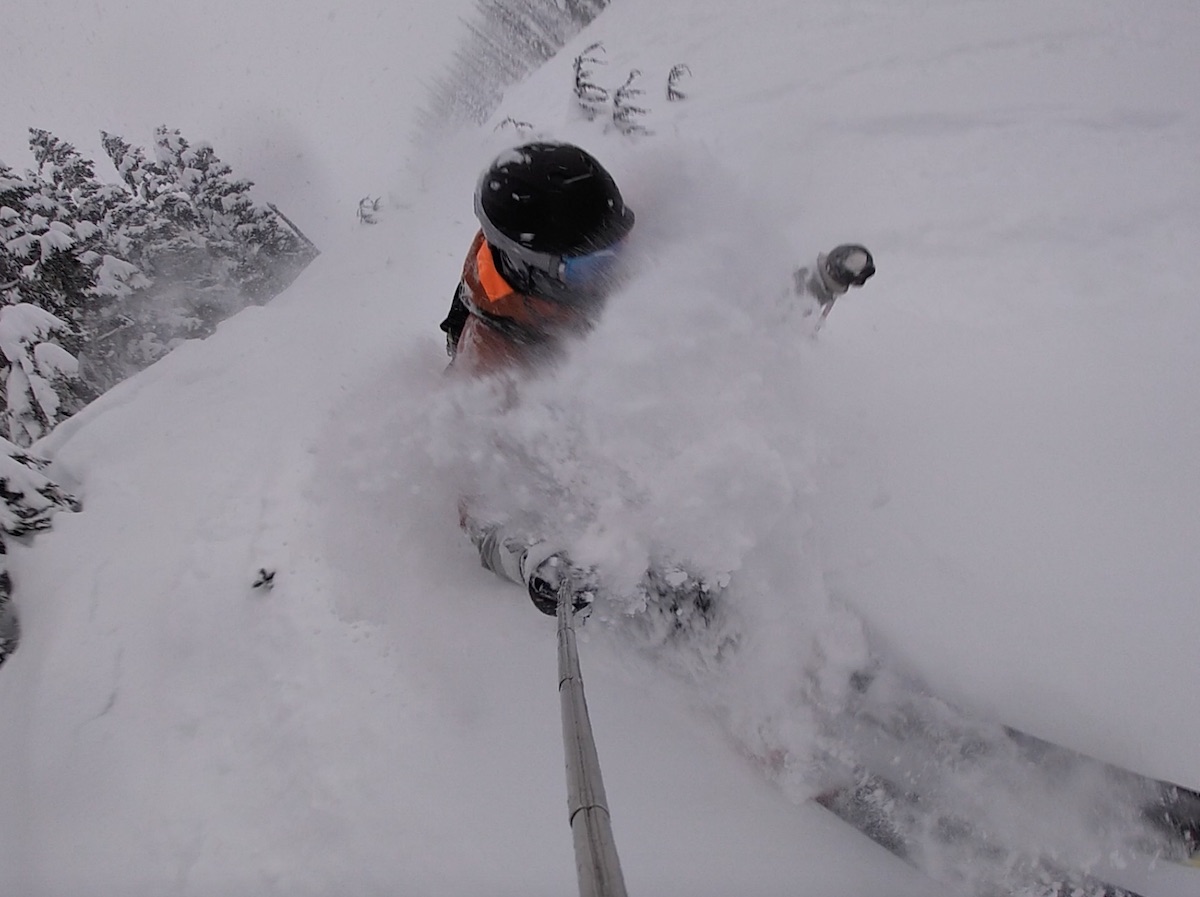
Shredding deep fluffy snow is life’s greatest pleasure. Hopefully some of these tips and tricks will help you on your journey to becoming a pro powder skier. Repetition, challenging yourself and skiing in varying conditions are the best ways to improve your skiing.
Just because the snow is soft and deep doesn’t mean you shouldn’t wear a brain bucket AKA a Helmet. I get smoked with branches all the time and couldn’t imagine riding without protection. If You’re looking for some high quality goggles and helmets check out my top picks here.
Do you have any powder skiing questions or are there any pointers I missed?
Let me Know In The Comments Below.

